Flouring a pan is an important step in baking. Why? Flouring the pan adds an extra layer of protection to prevent whatever you're baking from adhering to the surface of the pan. It's not a hard process to add into the baking prep time. We researched the best method of flouring a pan so you can proceed with confidence!
There are just a few simple steps involved in flouring any pan you're working with.
- Grease the pan.
- Dust flour over the surface of the pan.
Continue reading for tips and tricks for dealing with a pan you've forgotten to flour and other in-depth answers to common grease and flouring questions.
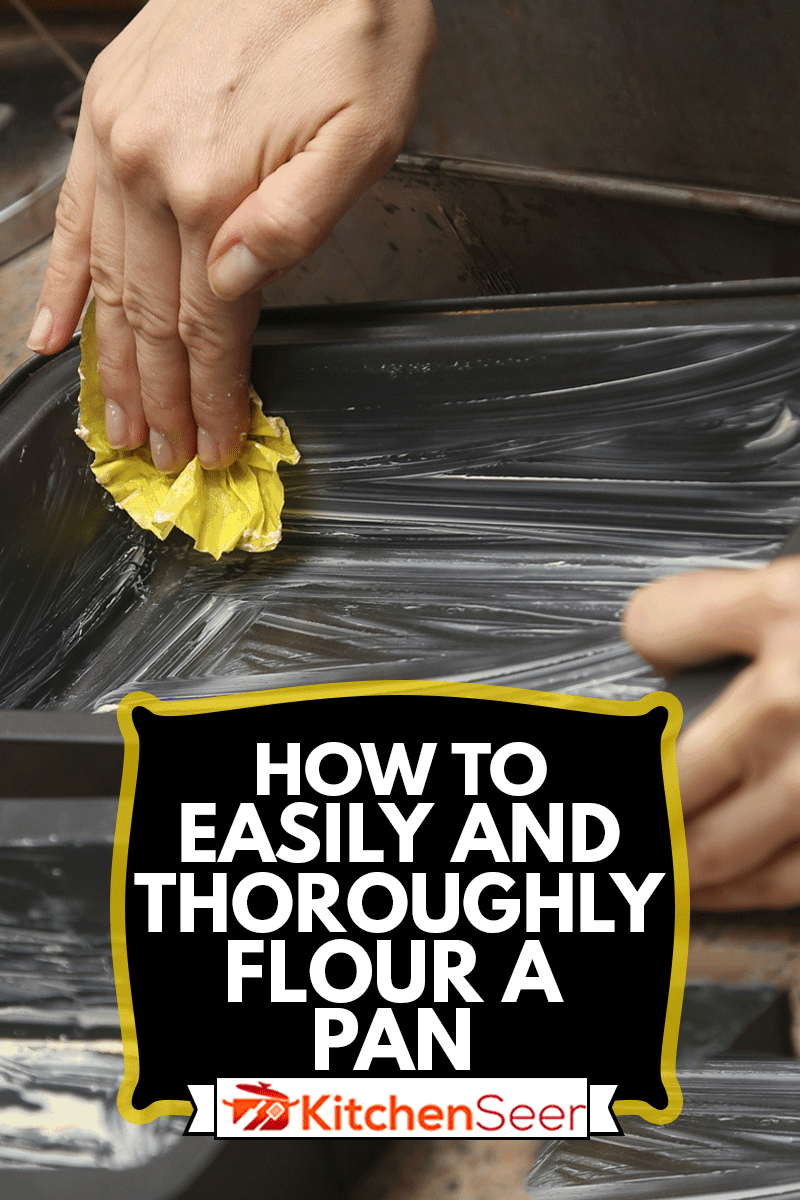
How Do You Flour a Pan?
Grease the pan
For this first step, most bakers prefer butter, but you can also use shortening, margarine, oil, or cooking spray. If using butter, take a stick of room temperature butter and spread it all over the inside of the desired pan, including the walls. If you’re using margarine, do the same, and for the oil, you can spread using your hands or a paper towel.
Dust Flour Over the Surface of the Pan
Spoon about 1 cup of all-purpose flour in the bottom of the pan. It's best to do this part over a trash can to minimize any mess. Slowly rotate the pan so that the flour coats the butter evenly. Dump out any excess flour.
What does flouring a pan mean?
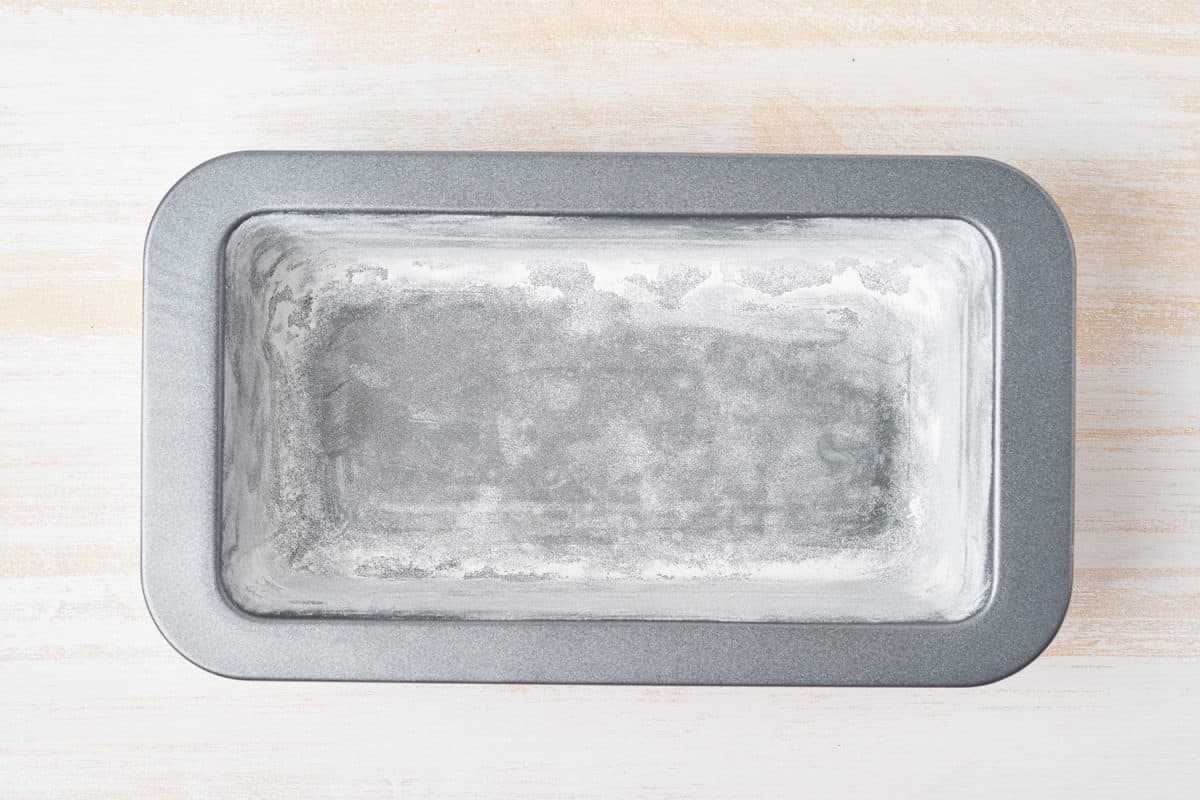
Flouring a pan refers to preparing the pan's surface before pouring your batter in, adding an extra layer of protection on top of the grease, making it non-stick. Flouring the pan prevents any batter from adhering to the walls of the pan during baking. It also makes for a nice, clean, smooth, and easy release once your cake is baked.
How do you flour dust a pan?
Flour dusting refers to taking a handful of flour, flicking your wrist, and allowing the flour to shoot out of the fingers. Dusting the surface with flour.
If you're not comfortable with the technique above or think it looks like it'll just add to the mess, you can get the same effect using a flour sifter. You use a handful of flour in the sifter above the desired pan and then make sure to rotate the flour in the pan, adding more if needed and dumping out any excess.
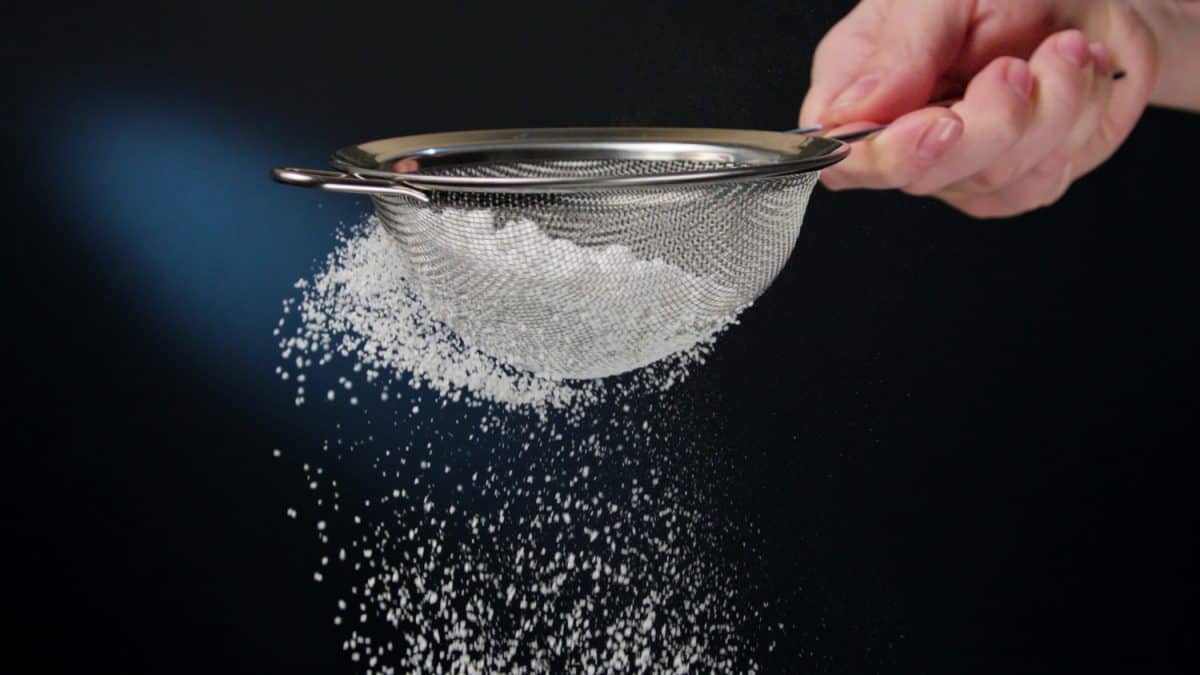
Do you grease and flour a cake pan?
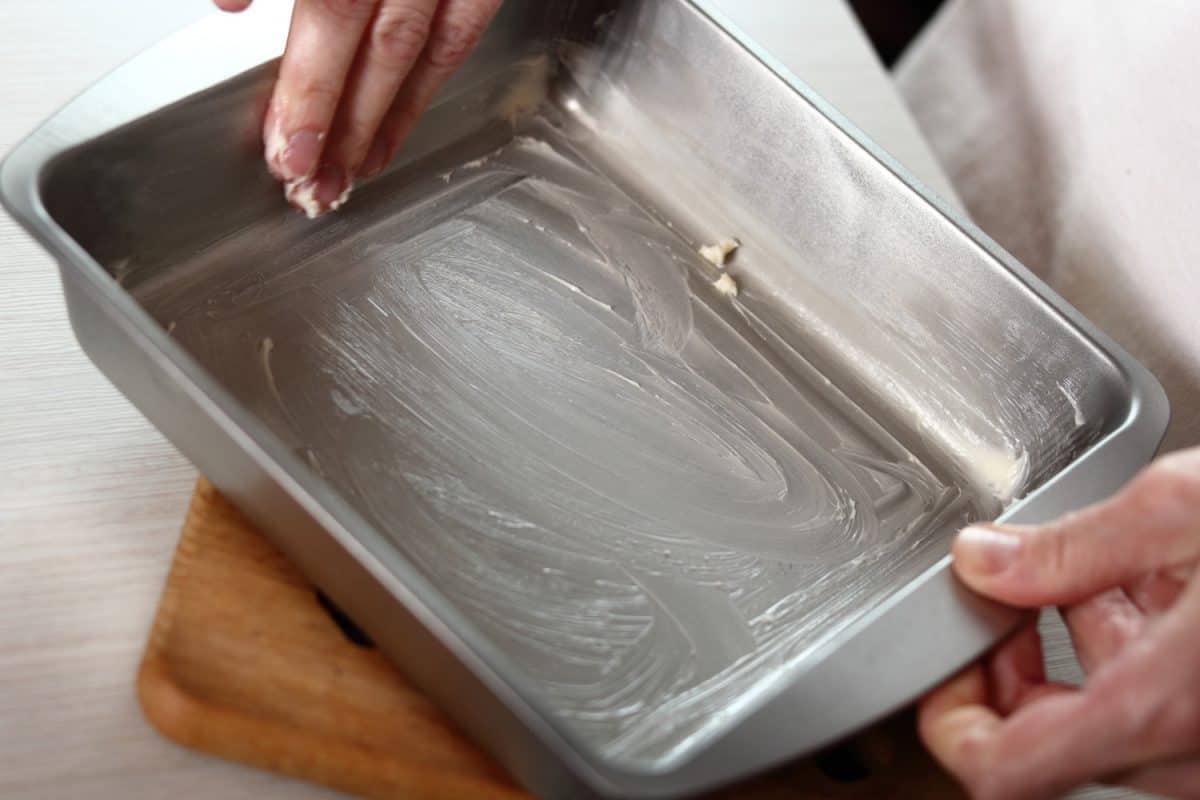
Yes, you will want to grease your pan before flouring. If you don't grease your pan before flouring it, there will be nothing for the flour to stick to, and you will end up with added flour on the outside of your batter.
Why do you grease and flour a pan?
Greasing and flouring the pan ensures you will have a non-stick pan, and you will be able to remove your baked confection smoothly and easily once it's done baking! The flour adds that extra layer of protection, preventing the batter from sticking to the surface of the pan. It also acts as a barrier so that the butter doesn't just melt into the cake batter while it's baking.
A pro tip for flouring chocolate cakes is to use cocoa powder instead of flour so that you don't get a white film on the dark cake batter.
Is it necessary to grease and flour a nonstick pan?
Greasing and flouring your pan does depend on your recipe. Generally, most cake recipes will have to grease your pan as one of the steps in the instructions. It's almost always a good idea to grease and flour a baking pan, though; it saves a lot of hassle and grief trying to remove that cake when it's done baking.
The main exception for flouring a pan is Angel's food cake. This type of heavy egg white batter cake will use your pan's walls to expand, give it that airy texture, and accomplish this, and it needs something to stick to. If the pan is greased, it can't accomplish this, and you will be left with a cake that hasn't expanded.
If you're using a recipe for a fat-based cake such as a butter cake, then you'll definitely want to grease and flour. If you're using a nonstick pan, you can skip the flouring and just grease, the flouring does still provide that easy release even in a nonstick, but it's more optional in the nonstick pan variety.
How to flour a bundt pan
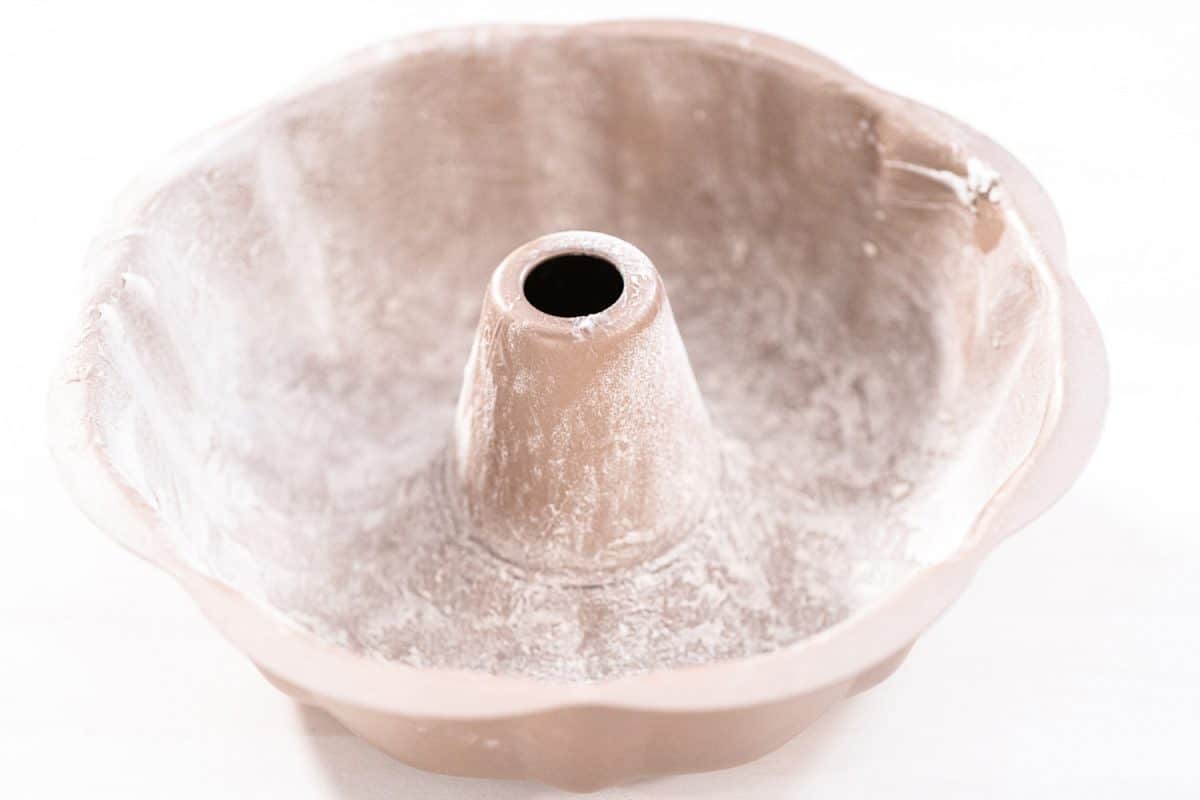
To flour a bundt pan, you need the same ingredients as any other pan, butter and flour. In place of the butter, you can use margarine, oil, or cooking spray.
- Take about a tablespoon of room temperature butter, spread it all over the inside of the pan, including the walls. If you’re using margarine, do the same, and for the oil, you can spread using your hands. If you're working with a very decorative bundt with many nooks and crannies, a pro tip is to take a baking brush to really get into the corners with your desired grease.
- Spoon about 1 to 1 1/2 tablespoons of flour in the bottom of the pan. Slowly rotate the pan so that the flour coats the butter evenly. Dump out any excess flour.
What happens if you forgot to flour a cake pan?
If you have forgotten to flour your cake pan, there are several tricks you can try to attempt to get the cake out without too much damage. Try any of the tricks listed below.
Shake the Pan
Try jiggling or gently shaking the pan while it's still warm to loosen the cake from the walls of the pan. Sometimes just this simple action will do the trick.
Turn it Upside Down to Cool
Once the pan has cooled a little, to the point you can handle it without having oven mitts on, place the pan on a solid surface upside down. Wait at least 10 minutes. Sometimes the weight of the cake will cause it to pull itself away from the pan walls. It's important you try this technique while the cake is still warm though.
Use a Knife
Try taking an icing spatula, smooth knife, such as a butter knife or a chopstick to gently remove the cake from the edges. If you're using a nonstick pan and a metal spatula or knife, you will want to take care not to damage the pan with the spatula or knife. If possible, get under the cake to remove it from that surface as well. If this isn't possible, you can try tapping the bottom of the pan to lift the cake from the pan once you've separated the edges.
Knock the Pan on the Counter
Place a towel down on your counter to protect it, take the corners of your pan and knock the pan on the counter, rotating the entire pan to try to release the cake from the pan.
Wrap and Freeze
You can try wrapping the cake and pan in plastic wrap and sticking it in the freezer for a few hours. A cold cake is less likely to fall apart if you are pulling it from the pan.
If some chunks are missing, you can "glue" them back together with icing and then ice overtop. If all else fails, you can serve the cake in the pan and ice the top.
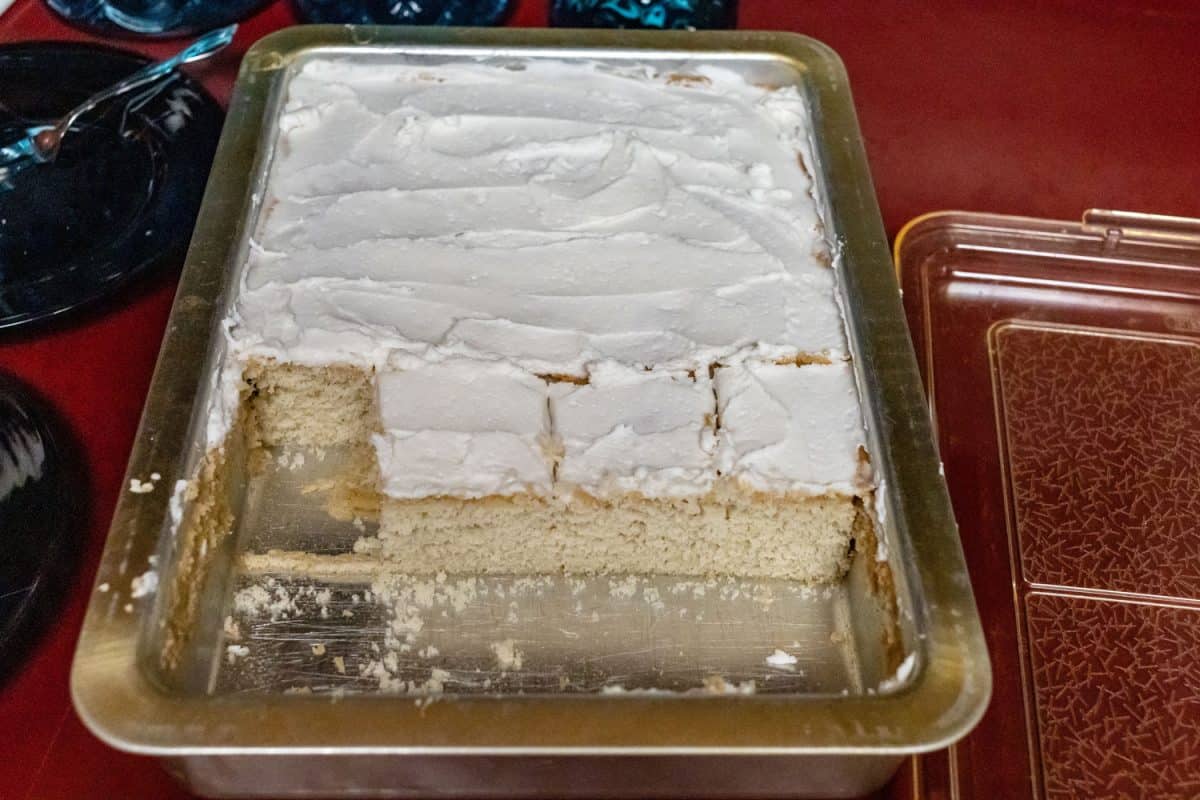
In Summary
Hopefully, we've answered all your questions about greasing and flouring a pan. It really is a simple step to add to baking prep, resulting in a hassle-free cake removal!
Check out these other Kitchenseer articles!
17 Types Of Bundt Pans To Know
Bread Flour Vs. All-Purpose Flour – Can You Substitute One For The Other?


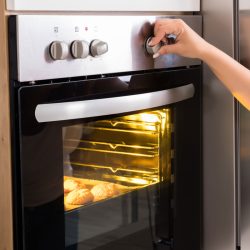
![A delicious chocolate and strawberry bundt cake on top of a table cloth, How To Easily Remove A Bundt Cake From The Pan [4 Methods To Try!]](https://kitchenseer.com/wp-content/uploads/2021/04/A-delicious-chocolate-and-strawberry-bundt-cake-on-top-of-a-table-cloth-250x250.jpg)
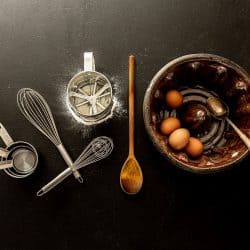
![A bundt pan and other baking equipments on the side, How Big Is A Bundt Pan? [How Many Cups It Can Hold]](https://kitchenseer.com/wp-content/uploads/2021/05/A-bundt-pan-and-other-baking-equipments-on-the-side-250x250.jpg)
![Traditional cake baked in tube pan, What Can You Use Instead Of A Bundt Pan? [5 Alternatives To Consider]](https://kitchenseer.com/wp-content/uploads/2021/05/Traditional-cake-baked-in-tube-pan-250x250.jpg)